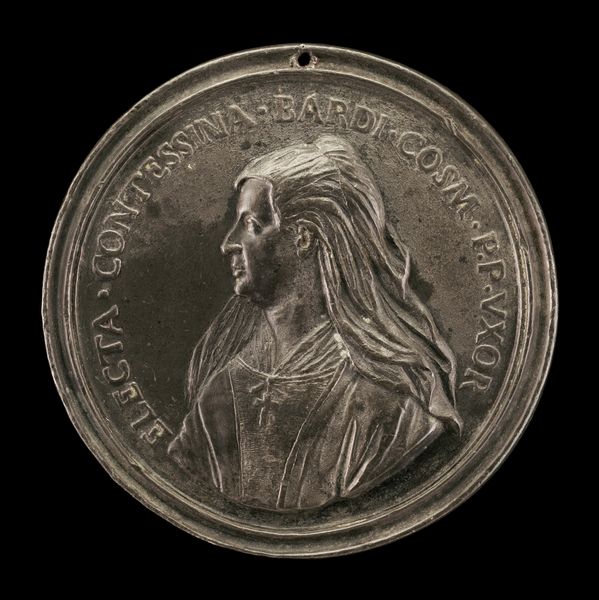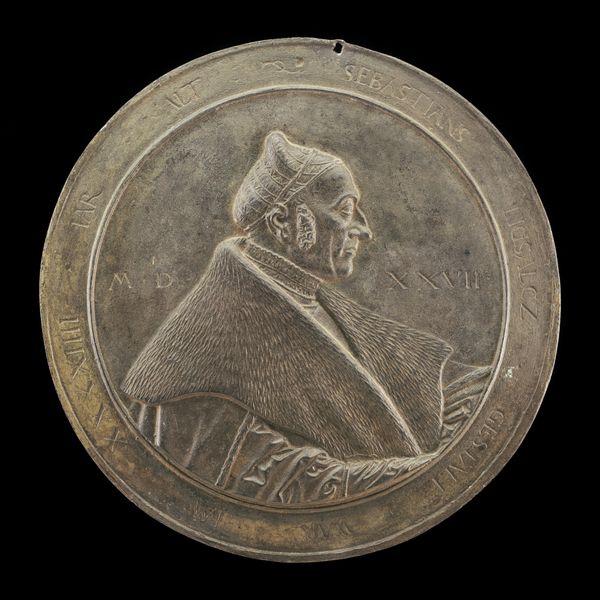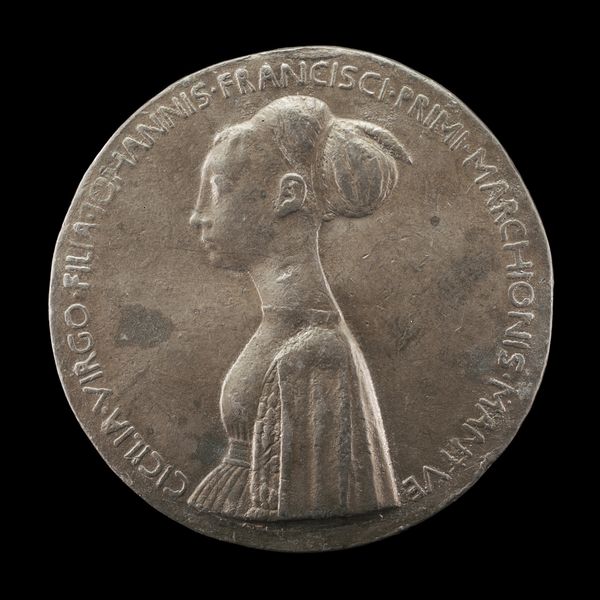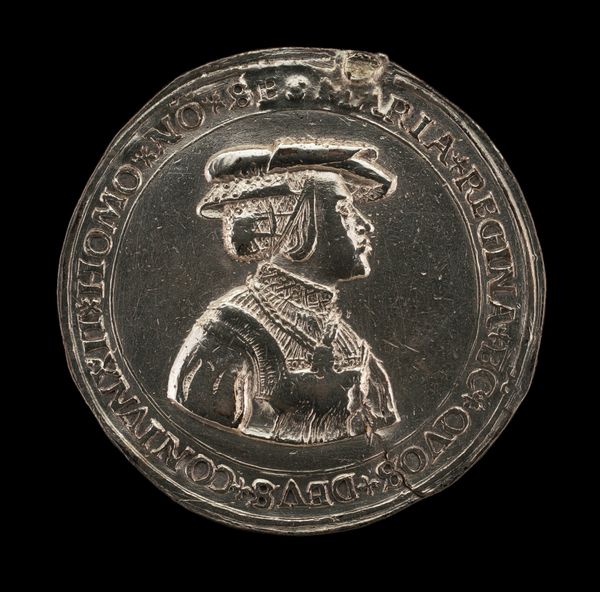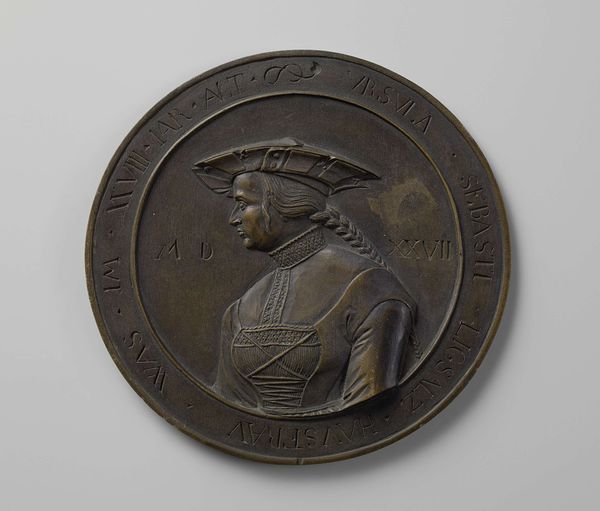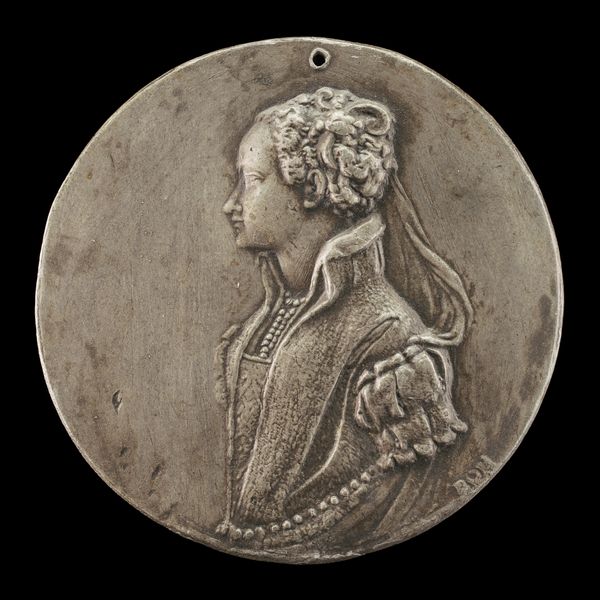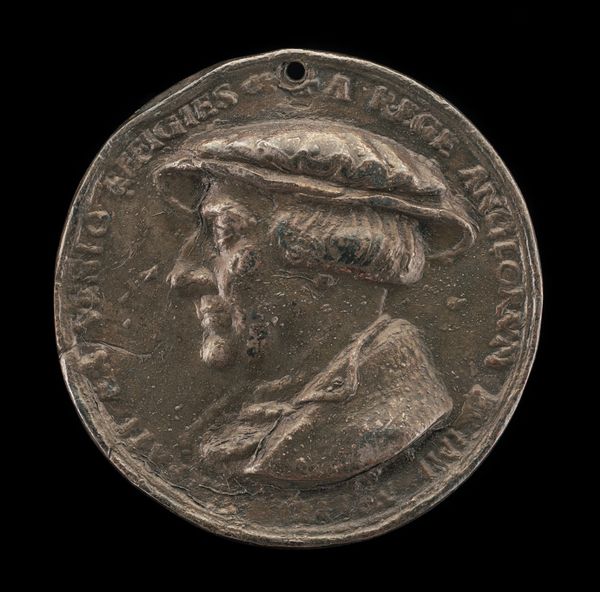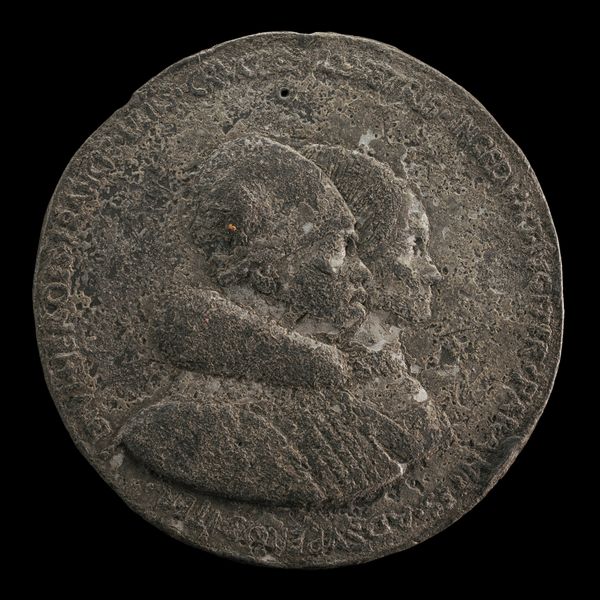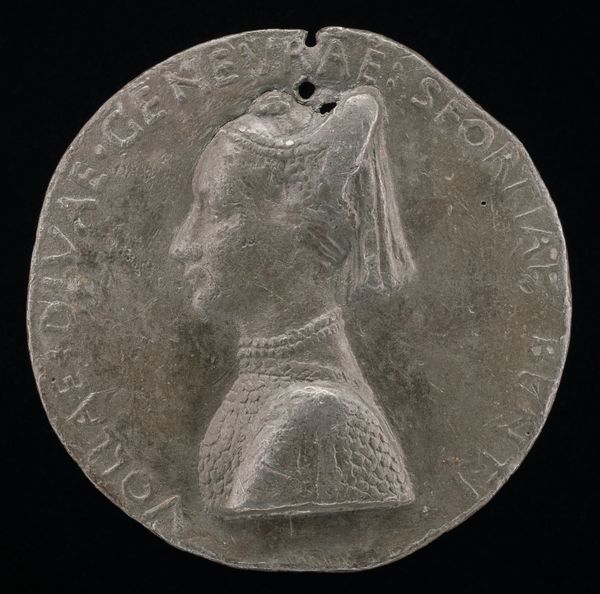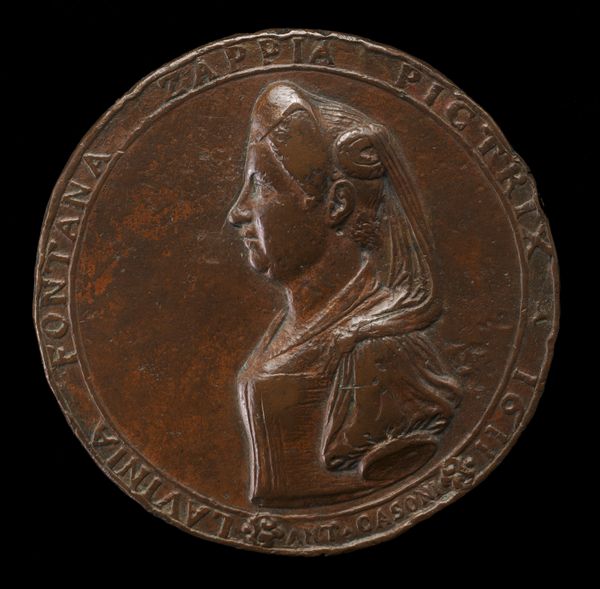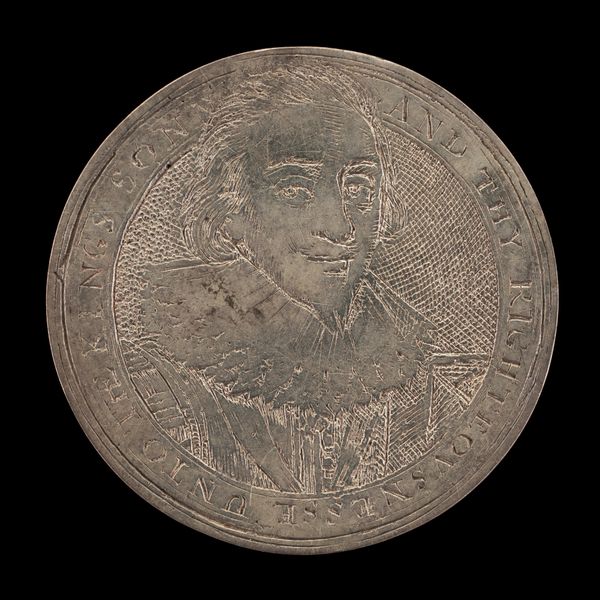
Ursula Saemftl, 1499-1551, Second Wife of Sebastian Liegsalz 1522 1527
0:00
0:00
metal, relief, bronze, sculpture
#
portrait
#
medal
#
metal
#
sculpture
#
relief
#
bronze
#
11_renaissance
#
sculpture
#
italian-renaissance
Dimensions: overall (diameter): 12.75 cm (5 in.) gross weight: 267.96 gr (0.591 lb.)
Copyright: National Gallery of Art: CC0 1.0
Editor: So, this is "Ursula Saemftl, Second Wife of Sebastian Liegsalz," a bronze relief created by Friedrich Hagenauer in 1527. It's interesting, almost like a coin, but on a grander scale. How do we unpack the layers of history embedded in such a portrait? Curator: The fascinating aspect lies in considering the commissioning context. Who seeks to memorialize their spouse in metal? And what does this gesture say about societal structures? We see a portrait of Ursula Saemftl enshrined in bronze – not merely an image, but a tangible assertion of status. Consider the choice of bronze itself; its association with permanence lends significant weight to the depicted subject. What does it suggest about Ursula’s place in society, or at least, her husband's aspirations for her perceived place? Editor: I suppose it suggests she was someone important, or that her husband wished her to be perceived that way? The detail in her dress and hairstyle must also be communicating something specific about her status and role. Curator: Precisely. Let's consider what aspects are *not* there. This isn't an intimate scene; it's a carefully constructed public image. It's propaganda in the most basic sense—a deliberate effort to shape how Ursula is seen and remembered, by controlling the visual narrative. The choice of a profile view lends formality; how do you think that differs from, say, a full-face depiction? Editor: It's almost like a Roman emperor! More official and distant, definitely less intimate than a head-on portrait. This gives us clues on how the artwork participates in the historical narrative of nobility and gender, right? Curator: Exactly. These medals functioned within a sophisticated system of social messaging. What seems a simple portrait reveals complex motivations concerning family status, legacy, and the carefully crafted presentation of self within a highly structured society. Editor: I never thought about portraiture as a form of early "branding" before. I’ll definitely look at these kinds of works differently from now on.
Comments
No comments
Be the first to comment and join the conversation on the ultimate creative platform.
